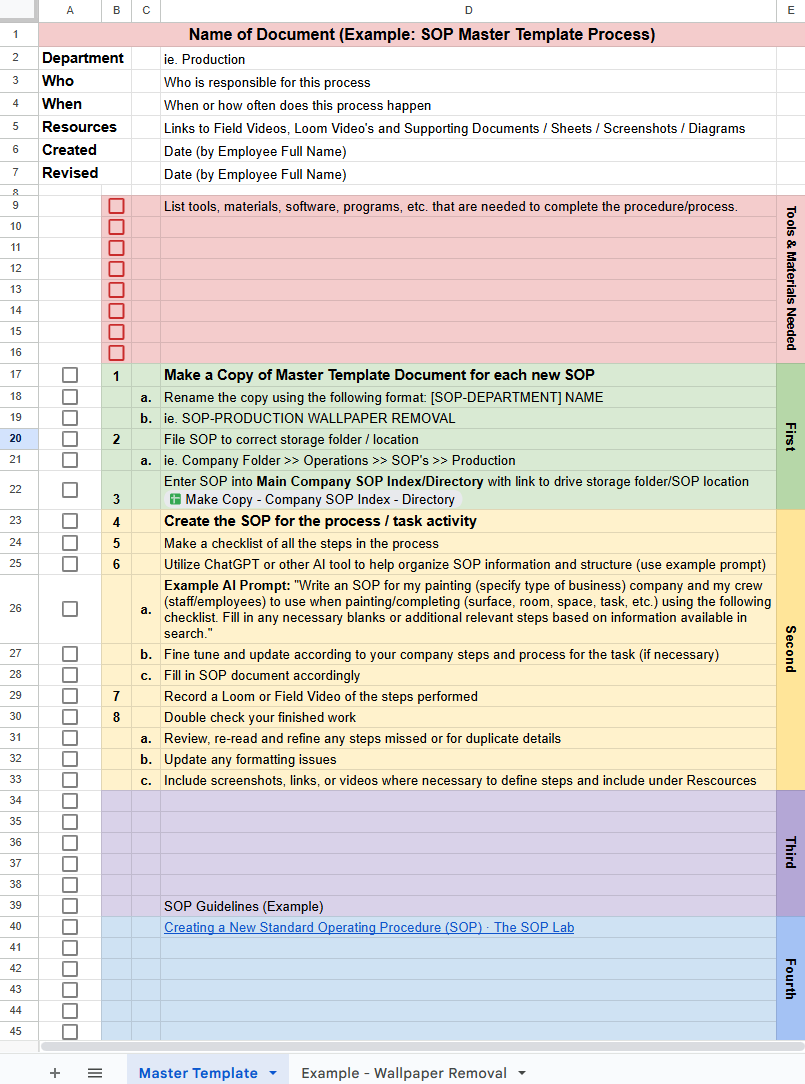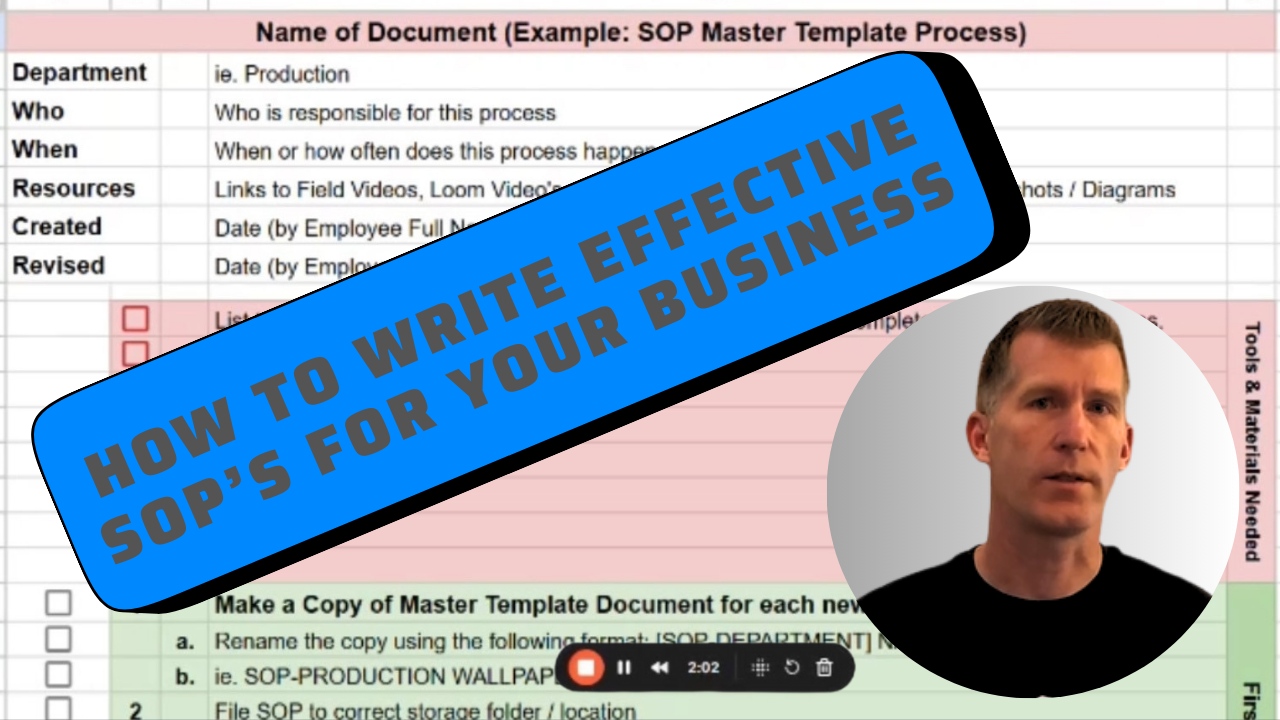How to Write SOPs for Your Painting Business: A Step-by-Step Guide
If you're serious about growing and scaling your painting business, building strong and easy to follow SOP’s (Standard Operating Procedures) is one non-negotiable you can't ignore.
Without clear systems, chaos creeps in. Jobs get missed. Customers get frustrated. Good employees leave. Profit evaporates. Growth isn’t an option.
But with the right SOP framework? Your business becomes repeatable, trainable, and ultimately, scalable.
Below, we’ll walk you through exactly how to create simple, effective SOPs tailored to the real-world needs of a painting company and also share a simple template to get you started. Like video? Watch our tutorial on writing your first SOP.
Why SOPs Are the Foundation of Every Successful Painting Business
It all starts with one core belief: All systems start with standards.
SOPs create the "rules of the road" for your team. When done right, they:
Reduce mistakes and confusion for every member of your team
Help train new hires faster
Improve job site consistency
Free you (the owner) from babysitting
Step 1: Build Your Core SOP Framework
Before writing your first SOP, build a framework to use every time:
Daily, Weekly, and Monthly Processes (examples)
Daily: Morning crew check-ins, surface prep, clean-up, end of day customer communication
Weekly: Job status meetings, timesheet review
Monthly: Equipment inspections & maintenance, pipeline review & forecasting
Internal vs. External-Facing SOPs (examples)
Internal: Employee onboarding, vehicle maintenance, production/project steps
External: Customer communication standards, project handoff checklist, final walkthroughs
Naming Conventions & File Structure
Keep names simple and searchable ("Job Site Setup SOP" not "Fancy Process #7")
Organize files in folders (like Admin, Sales, Production, Customer Service)
Create a document as an SOP Directory or Index with a list of all company SOP’s and links to access them quickly and easily.
Step 2: Involve Your Team in SOP Development
You don't have to do it all yourself — in fact, you shouldn’t.
Get Field Input: Your crews know the real workflows. Have them help document "how we actually do it." You likely already have standards and procedures, their just not documented yet. Start with writing down a checklist of each step in a process or routine.
Use SOPs for Training: Make them part of your onboarding so new hires hit the ground running and do things your way from the beginning.
Create a Feedback Loop: Schedule reviews every quarter to update SOPs as your business evolves. Over time procedures can change, be sure to update your SOP’s regularly.
Step 3: Choose Your SOP Tools
You don't need fancy software, but some tools make it easier:
Google Docs/Sheets or Excel: Easy and free starting point. Works great when organized well and easily searchable
Trainual, Process Street, Scribe: Specific software for businesses scaling up
Video SOPs: Great for showing hands-on processes (e.g., masking a window or cleaning of equipment)
Loom: Record each step of a process for a software program on your computer or device’s screen (e.g., accounting, CRM, or estimate creation)
ChatGPT or Other AI Tool: Using the right prompts can save you hours writing and developing your SOP’s
Tip: Pair a short written SOP with a 2-minute video for the best of both worlds!
Step 4: Track and Audit Your SOPs
SOPs are only valuable if people use them!
Assign Owners: Each SOP should have a team member responsible for keeping it updated.
Audit Regularly: Check quarterly that SOPs still match reality.
Simplify: Ruthlessly cut any outdated or bloated procedures.
Accessible: SOP Directory or Index for easy use and quick access.
Common Mistakes to Avoid When Writing SOPs
Too complicated: Keep it clear and step-by-step. Too many details can prohibit use and create frustration.
Never updated: Business changes — so should your SOPs.
Owner-dependent: If only you understand the SOP, it’s not scalable.
Ready to Start? Download Our Free SOP Starter Template
We've built a plug-and-play SOP Builder Template designed specifically for painting contractors.
Get operational clarity. Get your time back. Get your business ready to grow.
Need help? Contact us for a free discovery conversation and we will be happy to help walk you through the process and get you on your way to writing amazing SOP’s for your painting business!



